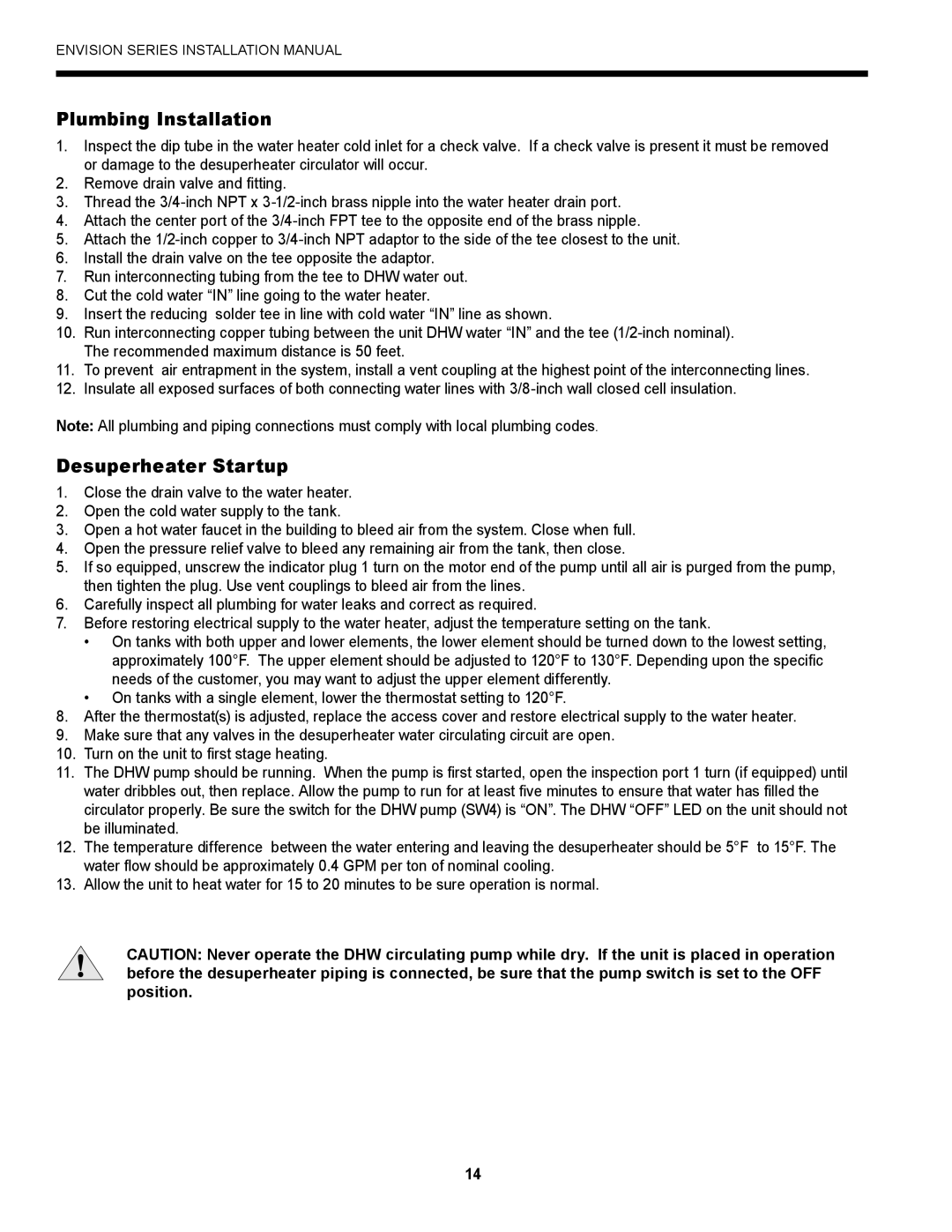Geothermal Indoor Split Heat Pumps specifications
Envision Peripherals has established itself as a leader in the energy-efficient heating and cooling market with its advanced geothermal indoor split heat pumps. These systems are designed to utilize the earth's stable underground temperature as a renewable energy source, resulting in remarkable performance and sustainability.One of the main features of Envision Peripherals geothermal indoor split heat pumps is their exceptional energy efficiency. With the ability to achieve a coefficient of performance (COP) exceeding 4.0, these heat pumps provide four units of heating or cooling for every unit of electricity consumed. This level of efficiency significantly reduces operational costs and lowers environmental impact, making them an ideal choice for eco-conscious consumers.
The technology employed in these systems emphasizes reliability and flexibility. The heat pumps are equipped with variable speed compressors, allowing them to adjust the heating and cooling output based on the current demands of the space. This results in consistent indoor temperatures and enhanced comfort. Moreover, the systems can seamlessly integrate with existing HVAC infrastructures, offering versatile installation options for residential and commercial applications.
Another characteristic that sets Envision Peripherals geothermal systems apart is their dual functionality. These units not only provide heating during the colder months but also excel in cooling during hot weather conditions. The geothermal heat pumps extract heat from the indoor air and transfer it to the ground, ensuring an efficient cooling process without the need for traditional air conditioning systems.
Durability and low maintenance are key aspects of Envision Peripherals heat pumps. Constructed with high-quality materials and advanced engineering, these systems are built to withstand varying environmental conditions. They feature a closed-loop system that minimizes wear and tear, reducing the frequency of repairs and providing homeowners and businesses with peace of mind.
In addition, Envision Peripherals emphasizes eco-friendliness. The use of renewable geothermal energy diminishes dependence on fossil fuels, contributing to a more sustainable living and working environment. Their commitment to sustainability aligns with global efforts to reduce greenhouse gas emissions and combat climate change.
In summary, Envision Peripherals geothermal indoor split heat pumps deliver exemplary energy efficiency, advanced technology, and a range of benefits, including dual functionality and reduced environmental impact. As the demand for sustainable heating and cooling solutions continues to grow, these systems represent a leading choice for consumers seeking comfort and energy savings.

